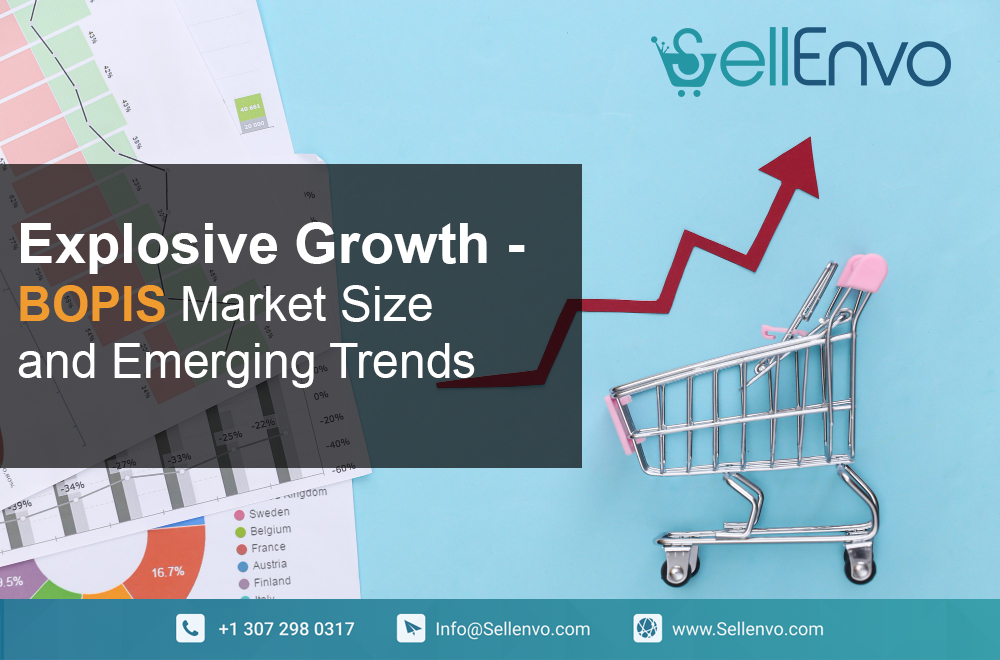In today’s fast-paced digital landscape, e-commerce integrations are no longer just an option—they’re an essential component for retailers looking to dominate the market. With the rise of omnichannel retail solutions, integrating multiple sales channels, platforms, and systems has become a strategic imperative. But what exactly does this mean for retailers, and how can companies like SellEnvo be pivotal in this transformation? Let’s dive in.
What are E-commerce Integrations?
At its core, e-commerce integrations involve consolidating various e-commerce tools, platforms, and systems to ensure they work cohesively. The keyword here is “integration.” It’s about making sure that every piece of your retail jigsaw fits seamlessly together, giving both businesses and customers a smooth, efficient, and enhanced experience.
The Rise of Omnichannel Retail Solutions
Over the last decade, the retail industry has undergone significant transformation. Retailers are now realizing the immense potential of offering unified shopping platforms that span across in-store, mobile apps, and websites. This evolution has led to the emergence of omnichannel retail—a strategy that allows retailers to integrate and manage all their sales channels cohesively.
Why is adopting an omnichannel approach pivotal for retailers? It’s about maximizing reach and efficiency. For instance, a potential sale might begin with a customer discovering a product through a mobile app, considering it in-store, and then finalizing the purchase online. By ensuring these channels are interconnected and well-integrated, retailers can optimize the sales process, drive increased revenue, and fortify brand loyalty.
The Power of Effective Integrations
E-commerce integrations, when done right, offer retailers a plethora of benefits:
- Unified Data: With integrations, data from different platforms is consolidated, making it easier to derive actionable insights.
- Enhanced Customer Experience: A unified retail strategy ensures customers have a consistent and enjoyable shopping experience, regardless of the channel they use.
- Optimized Operations: Streamlined processes lead to reduced operational costs and increased efficiency.
- Boosted Sales: With cohesive integrations, businesses can provide targeted offers, seamless checkouts, and faster deliveries—all of which contribute to increased sales.
How SellEnvo Elevates E-commerce Integrations
SellEnvo, a leader in e-commerce solutions, is perfectly poised to empower retailers with state-of-the-art e-commerce integrations. Here’s how:
- Holistic Solutions: SellEnvo understands that e-commerce is not a one-size-fits-all domain. Its solutions are tailored to accommodate different retail needs, ensuring that integrations add tangible value to your business.
- AI-Powered Insights: With the infusion of AI capabilities, SellEnvo provides retailers with insights that can help forecast trends, optimize inventory, and understand customer behaviors more profoundly. This intelligent approach to e-commerce ensures retailers always stay one step ahead of the curve.
- Seamless Data Management: One of the standout features of SellEnvo is its import and export functionality. Retailers no longer need to grapple with complex data migrations or transfers. SellEnvo can effortlessly handle any source of retail data, ensuring that integrations are not just functional but also efficient.
How to integrate your Amazon Seller account into Sellenvo?
Integrating your Amazon Seller account into SellEnvo is a strategic move that can yield significant benefits for your business. It streamlines operations, offers holistic data insights, and ensures a smoother sales process. To get you started on this integration, we’ve put together a step-by-step guide.
Beginning the Integration Process:
Accessing the Integration Menu:
Upon logging into SellEnvo, the Integrations menu is your gateway to connecting with various platforms. This menu allows you not only to add new channels but also adjust settings for existing ones.
Steps to Add a New Amazon Channel:
- Navigating to Sales Channels:
Start by heading over to the Integrations menu. Once there, opt for “Sales Channels.” - Initiating a New Channel:
On the Sales Channels page, you’ll notice an “Add Channel” button on the right side of the screen. Click on it. - Channel Selection:
A drawer or popup should appear on your screen showcasing various channels available for integration. From the given options, select “Amazon.”

Amazon Integration Wizard: Your Pathway to Integration
Now that you’ve initiated the integration process, the Amazon Integration Wizard will guide you through the rest. This wizard is intuitive, ensuring that even those new to e-commerce platforms can integrate with ease.
Step 1: Account Configuration

- Naming the Channel:
Begin by setting a unique name for the channel. This could be something like “Amazon Main” or “Primary Amazon Store” – whatever helps you identify the account easily. - Account Identifiers:
Here, you’ll need to input the Seller ID and MWSAuthToken ID. Ensure you have these details copied from your Amazon account and paste them into the respective fields on the interface. - Region and Marketplace Selection:
Depending on where you primarily sell or wish to sell, select the appropriate region and marketplace. - Finalizing the Integration:
Once all details are correctly entered, click the “Next” button.
Step 2: Order Configuration

Now that you’ve set up your account details, the next crucial phase in the integration process focuses on order configuration. This stage ensures that the flow of orders between your Amazon Seller account and SellEnvo is seamless, accurate, and aligns with your business processes.
- Selecting Fulfillment Type:
Based on your business model and preferences, choose the type of fulfillment you employ for your products. You can select:- Fulfilled by Amazon (AFN): If you’re using Amazon’s warehouses and delivery system to ship your products.
- Fulfilled by Seller (MFN): If you’re handling storage, packaging, and shipping of the products yourself.
- Both: If your business operates using a mix of both fulfillment methods.
- Importing Orders by Status:
To make your order management more efficient, SellEnvo allows you to filter and import orders based on their current status within your Amazon Seller account. This ensures you’re always updated with the most relevant order information. You can choose from the following statuses:
-
- Pending Availability: Orders that are awaiting product availability.
- Pending: Orders that have been placed but not yet shipped.
- Partially Shipped: Orders where only some items have been shipped.
- Shipped: Orders that have been fully processed and dispatched.
- Canceled: Orders that have been canceled either by the seller or the customer.
- Unfulfillable: Orders that, for some reason, cannot be fulfilled.
- Importing After a Specific Date:
If you’re migrating to SellEnvo or have specific tracking requirements, you might not want to import all historical order data. Instead, you can set a specific date and choose to import only the orders placed after that date. This feature is especially handy to keep your new system decluttered and to focus only on the recent and more relevant data.
In conclusion, by following these meticulous yet straightforward steps, sellers can effortlessly integrate their Amazon Seller account with SellEnvo. Once this seamless integration is in place, they can delve deeper into the platform’s myriad of features. From configuring MFN Inventory, Pricing, FBA, and Listings to leveraging the innovative Listing Auto Create and the transformative Buy Online, Pick Up In-Store (BOPIS) feature, the possibilities are expansive. SellEnvo is truly designed to make e-commerce integrations efficient, enabling sellers to concentrate on growing their business while it takes care of the complexities.



